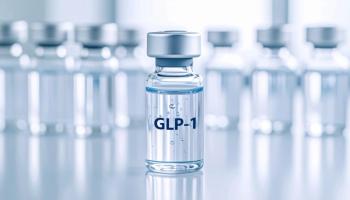
Effective Treatment for Some Patients with Arndt-Gottron Syndrome Can Be Achieved With IVIG
Though there is no well-defined therapeutic approach to the treatment of Arndt-Gottron syndrome, intravenous immunoglobulins have been documented as a well-tolerated treatment in some cases.
Though additional research is needed to establish a well-defined therapeutic approach to treat Arndt-Gottron (S-AG) syndrome, or scleromyxedema, immunoglobulins are a well-tolerated treatment that can modify the disease course in some patients, according to a report published in Clinical Case Reports.
In the case of an 85-year-old woman presenting with S-AG, intravenous immunoglobulin (IVIG) were part of a successful treatment course.
S-AG is a scarce disease of not well-known etiology. The disease is characterized by a generalized papular and sclerodermoid eruption due to mucin accumulation in the dermis, increased fibroblast proliferation, and fibrosis. The condition affects mostly middle-aged adults of 30-50 years of age.
In some cases, S-AG may be life-threatening due to systemic manifestations that can lead to significant morbid-mortality.
The case report described a scerlomyxedema case associated with a benign monoclonal gammapathy in Tunisian. An 85-year-old Tunisian woman with a history of osteoporosis was admitted for swelling reddened and indurated skin on the face, ears, neck, upper limbs, and back, which started 2 months prior and were progressively worsening.
No improvement was noted under antihistamine therapy consisting of Desloratadine 5 mg daily. On examination, a generalized eruption of 2-3 mm lichenoid papules was found. These lesions coalesced, leading to the induration of the underlying tissue.
No Raynaud phenomenon or dysphagia were observed. The remainder of the physical examination was normal and no tumoral syndrome was found.
Complementary tests were conducted, revealing a microcytic hypochromic anemia to 11.1 g/dl due to iron deficiency and an inflammatory biologic syndrome; however, calcemia, renal, and liver functions were found to be normal.
Serum protein electrophoresis showed a narrow spike in the gamma region suggesting monoclonal gammapathy. Immunoelectrophoresis revealed monoclonal spikes immunoglobulin G (IgG) Lambda (λ) in both blood and urine samples.
As, the bone marrow examination did not find any abnormalities, especially plasma cells of aberrant morphology, the diagnosis of monoclonal gammapathy of the IgG λ was made. All other tests, such as antinuclear antibodies and rheumatoid factors, were normal or negative. Serology tests for hepatitis B and C virus and HIV were also negative, as were upper and lower gastrointestinal endoscopy.
A computed axial tomography of the chest, abdomen, and pelvis did not provide any significant data.
However, a skin biopsy showed a thinned epidermis with irregularly arranged fibroblasts, fibrosis, and diffuses mucin deposition within the upper and mid reticular dermis. Perivascular, lymphocytic, and plasmacytic infiltrate was also present and hair follicles were found to be atrophic.
No signs of malignancy were detected. On that account, the diagnosis of Arndt-Gottron scleromyxedema was determined.
The patient was treated with double antihistamine therapy, prednisone (orally, 1 mg/Kg/day the first month and then gradually tapered), and 9 courses of polyvalent IVIG (2 g/kg for 4 days monthly).
During antihistamine therapy, Hydroxyzine hydrochloride 25 mg was associated with Desloratadine because of severe pruritus with sleep disturbance.
Within the next 3 months, the lesions had almost completely disappeared and antihistamine therapy was stopped. During a 9-year follow-up period, the patient remained stable and did not present and systemic manifestation of S-AG.
This patient demonstrated a case in which S-AG is clinically revealed by diffused symmetric lichenoid papules often arranged linearly and causing extensive thickening of the skin. These features usually involve the face, neck, distal forearms, and hands, and set the palms and mucous membranes apart.
For this patient, the onset of S-AG of symptoms began at 85 years of age, which is not frequently described. Though extracutaneous manifestations were absent in this case, the authors emphasize that it is crucial to constantly seek them out as they can be life-threatening in some cases by involving cardiovascular, gastrointestinal, pulmonary, and central nervous systems.
The authors note that pathological features are the most important pillars of S-AG diagnosis. Systemic manifestations may result from mucin deposition in various organs, including the heart and lungs.
The authors also highlighted an association of S-AG with paraproteinemia (up to 83% of cases), especially IgG lambda subtype, as described in this patient, with rare cases developing plasma cell dyscrasia or multiple myeloma (10%). Based on this association, they recommend looking for gammapathy in any patient presenting a S-AG.
To date, there is no completely satisfactory therapeutic approach to S-AG, due to the rarity of the condition and lack of well-designed clinical trials. Several agents have been tried in addition to antihistamine therapy, including, corticosteroids, melphalan, polyvalent immunoglobulins, and even autologous stem cell transplantation.
Although more work is needed to understand the etiopathogenesis and define a clear therapeutic approach for this condition, immunoglobulins can serve as a well-tolerated treatment for some patients, including the woman in this case, according to the investigators.
Reference
Kefi A, Jaziri F, Abdelghani K B, Turki S. Early onset of scleromyxedema Arndt-Gottron associated with a monoclonal gammapathy: Successful treatment with intravenous immunoglobulins. Clinical Case Reports. 2022;10(8):e6122.
Newsletter
Stay informed on drug updates, treatment guidelines, and pharmacy practice trends—subscribe to Pharmacy Times for weekly clinical insights.

















































































































































































































